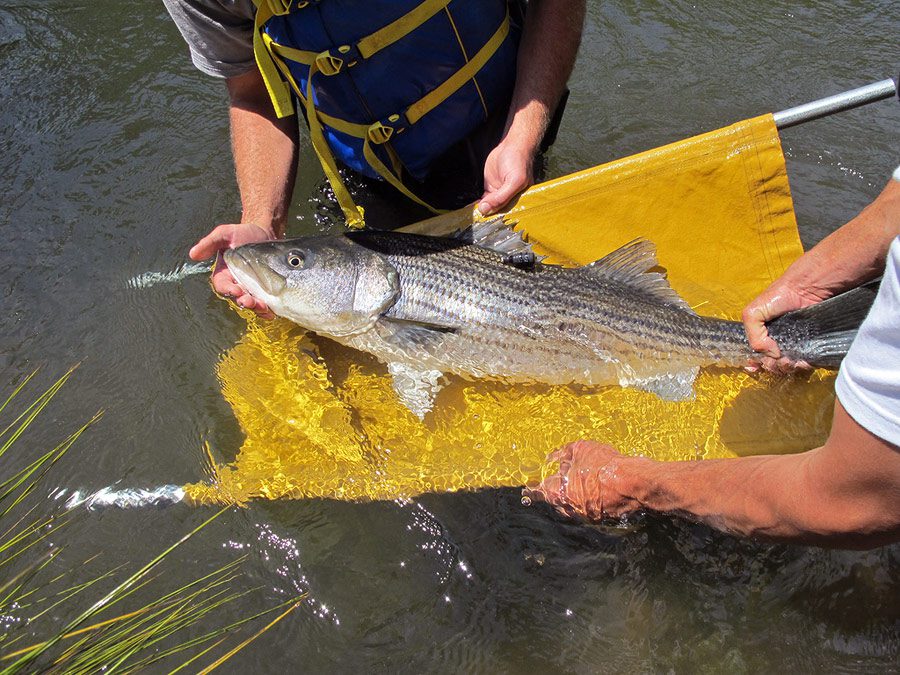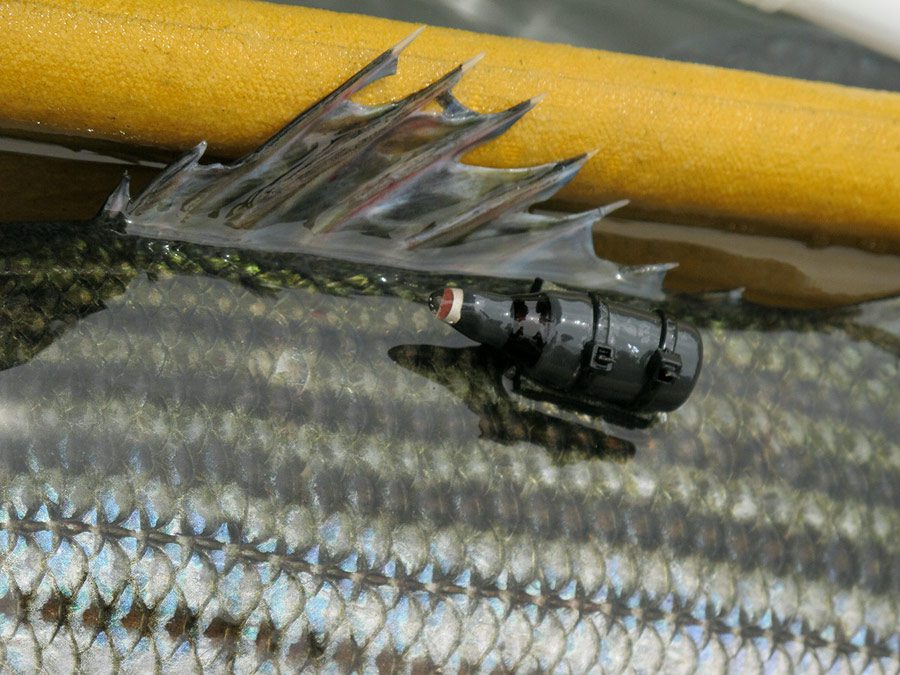Monday March 21, 2011
The striped bass shown in these pictures were tagged in an effort to evaluate their migration behavior in a lower Central Valley tributary (see our post Basstracker). The acoustic tags are HTI LX-type with a life span of approximately 180-300 days, depending on the pulse rate. Fish are tracked over roughly 60 miles of stream using mobile and fixed-location tracking techniques. The study is the first of its kind in the basin and is intended to compliment other acoustic tracking research on juvenile Chinook outmigration survival, and steelhead smolt migration behavior and survival.
Advancements in remote animal tracking (biotelemetry) technology have provided researchers a unique and powerful tool to gather information on fish movements, activity, behavior, and habitat use that would otherwise be unattainable in the wild. Traditional mark and recapture methods generally involved capturing and handling the fish at both the ‘mark’ and ‘recapture’ events, which has the potential to adversely affect the survival, growth, or behavior of the captured individuals. Furthermore, no information is collected between the capture and recapture events, so limited data are collected. Electronic transmitters, such as radio and acoustic tags, only require handling during the initial tagging event and can subsequently provide data throughout the life of the transmitter.
Radio and acoustic telemetry are similar in that fish are tagged with transmitters and data is acquired by tracking individuals remotely with receivers. However, radio tag signals attenuate with depth, whereas acoustic tags transmit low-frequency, long-wave signals that travel well through water. Additionally, acoustic signals are not substantially affected by conductivity, unlike radio signals, which allows them to be effective in estuarine and ocean environments. Watch for more on acoustic telemetry technology in our upcoming posts.
Photo source: FISHBIO


